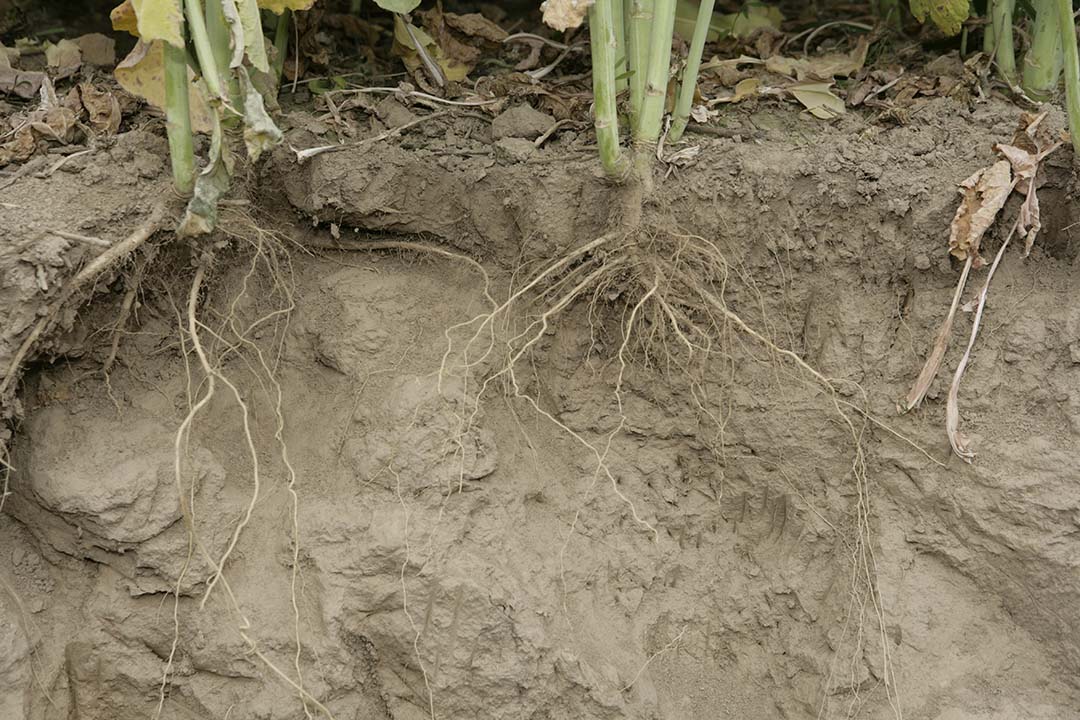Biome Makers’ BeCrop soil intelligence technology proven effective – Future Farming
Biome Makers’ BeCrop soil intelligence technology proven effective Future Farming



Biome Makers Unveils Groundbreaking Findings on BeCrop Soil Intelligence Technology
Biome Makers, a global leader in agtech, has unveiled groundbreaking findings from two scientific studies affirming the efficacy of its BeCrop soil intelligence technology. These studies shed light on key insights for agricultural practices worldwide, emphasizing the practical benefits of BeCrop for farmers seeking to optimize soil health and crop productivity.
BeCrop Technology: Enhancing Soil Health and Functionality
BeCrop Technology, developed by Biome Makers, offers practical insights into soil health and functionality. By analyzing microbial metabolism and soil bio-sustainability, BeCrop detects stress, identifies nutrient deficiencies, and correlates with different agricultural management practices. Accessible via API (Application Programming Interface) connections, BeCrop seamlessly integrates into existing agricultural systems, empowering farmers and professionals to make informed decisions for optimizing crop productivity and soil health.
Organic Management: Positive Influence on Soil
In a comprehensive study titled “Physicochemical Properties and Microbiome of Vineyard Soils from DOP Ribeiro (NW Spain) Are Influenced by Agricultural Management,” the impact of different management systems on vineyard soils was evaluated. The study’s findings underscore several crucial points:
- Sustainable agricultural practices, particularly organic management, have a positive influence on soil conditions in vineyards. Organic vineyards exhibit decreased soil acidity and increased levels of essential nutrients compared to conventional ones, fostering more resilient microbial networks that benefit plant health.
- Minimal pesticide residues are detected in organic vineyards, while conventional and transitional vineyards show reductions in pesticide residues over time. However, the transition from conventional to organic management may require further investigation due to residual persistence.
- Differential microbial community compositions were observed between organic and conventional management systems, highlighting the unique microbial profiles associated with each approach.
Biodynamic Preparations: Reshaping Soil Microbes
In another study titled ‘Enrichment of Putative Plant Growth Promoting Microorganisms in Biodynamic Compared to Organic Agriculture Soils’, the focus shifted to the enrichment of soil microbiota in biodynamic and organic agricultural soils. Key findings include:
- Biodynamic preparations significantly alter soil microbial communities, leading to increased abundance of beneficial microorganisms with plant growth-promoting properties. These preparations, rich in phytohormones and stress-reducing agents, contribute to enhanced soil fertility and plant vigor.
- While taxonomic composition remains similar across different experimental sites, variability exists at the species level, influenced primarily by geographical location and sampling timepoints.
- The abundance of putative plant growth-promoting organisms is notably higher in biodynamic soils, indicating the potential for biodynamic practices to stimulate microbial-mediated plant growth and soil health.
These results underscore the value of BeCrop technology in improving soil management practices and advancing sustainable agriculture. Dr. Alberto Acedo, Chief Science Officer and co-founder of Biome Makers, reaffirmed the company’s commitment to scientific excellence, stating, “These findings validate the effectiveness of BeCrop in enhancing soil health and crop productivity, paving the way for a more sustainable agricultural future”.
SDGs, Targets, and Indicators
| SDGs | Targets | Indicators |
|---|---|---|
| SDG 2: Zero Hunger | Target 2.4: Sustainable food production systems | Indicator 2.4.1: Proportion of agricultural area under productive and sustainable agriculture |
| SDG 3: Good Health and Well-being | Target 3.9: Reduce the number of deaths and illnesses from hazardous chemicals and air, water, and soil pollution and contamination | Indicator 3.9.1: Mortality rate attributed to household and ambient air pollution |
| SDG 15: Life on Land | Target 15.1: Ensure the conservation, restoration, and sustainable use of terrestrial and inland freshwater ecosystems and their services | Indicator 15.1.1: Forest area as a proportion of total land area |
| SDG 15: Life on Land | Target 15.2: Promote the implementation of sustainable management of all types of forests, halt deforestation, restore degraded forests, and substantially increase afforestation and reforestation globally | Indicator 15.2.1: Progress towards sustainable forest management |
| SDG 15: Life on Land | Target 15.9: By 2020, integrate ecosystem and biodiversity values into national and local planning, development processes, poverty reduction strategies, and accounts | Indicator 15.9.1: Progress towards national targets established in accordance with Aichi Biodiversity Target 2 of the Strategic Plan for Biodiversity 2011-2020 |
1. Which SDGs are addressed or connected to the issues highlighted in the article?
SDG 2: Zero Hunger
The article discusses the impact of different agricultural management practices on soil health and crop productivity, which aligns with SDG 2’s goal of achieving sustainable food production systems.
SDG 3: Good Health and Well-being
The article mentions the detection of pesticide residues in vineyards and the potential health benefits of organic management practices, linking to SDG 3’s target of reducing deaths and illnesses from hazardous chemicals and pollution.
SDG 15: Life on Land
The article emphasizes the importance of sustainable soil management and the impact of different agricultural practices on soil health, which relates to SDG 15’s targets of conserving and restoring terrestrial ecosystems and integrating biodiversity values into planning and development processes.
2. What specific targets under those SDGs can be identified based on the article’s content?
Target 2.4: Sustainable food production systems
The article highlights the positive influence of sustainable agricultural practices, particularly organic management, on soil conditions and nutrient levels in vineyards.
Target 3.9: Reduce the number of deaths and illnesses from hazardous chemicals and pollution
The article mentions the detection of pesticide residues in conventional and transitional vineyards, indicating the potential risks associated with these chemicals.
Target 15.1: Ensure the conservation, restoration, and sustainable use of terrestrial ecosystems
The article emphasizes the importance of soil health and functionality in agricultural practices, highlighting the need for sustainable soil management.
Target 15.2: Promote the implementation of sustainable forest management
While not explicitly mentioned in the article, sustainable forest management is a key component of overall ecosystem health and biodiversity.
Target 15.9: Integrate ecosystem and biodiversity values into planning and development processes
The article discusses the unique microbial profiles associated with different agricultural management systems, highlighting the importance of considering ecosystem and biodiversity values in soil management.
3. Are there any indicators mentioned or implied in the article that can be used to measure progress towards the identified targets?
The article does not explicitly mention specific indicators for measuring progress towards the identified targets. However, some potential indicators that could be used include:
– Indicator 2.4.1: Proportion of agricultural area under productive and sustainable agriculture, to measure the adoption of sustainable agricultural practices.
– Indicator 3.9.1: Mortality rate attributed to household and ambient air pollution, to assess the impact of pesticide residues on human health.
– Indicator 15.1.1: Forest area as a proportion of total land area, to monitor the conservation and restoration of terrestrial ecosystems.
– Indicator 15.2.1: Progress towards sustainable forest management, to evaluate efforts to halt deforestation and promote sustainable forest practices.
– Indicator 15.9.1: Progress towards national targets established in accordance with Aichi Biodiversity Target 2, to track the integration of ecosystem and biodiversity values into planning and development processes.
These indicators would provide quantitative data to assess the progress made towards achieving the identified targets.
4. SDGs, Targets, and Indicators
| SDGs | Targets | Indicators |
|---|---|---|
| SDG 2: Zero Hunger | Target 2.4: Sustainable food production systems | Indicator 2.4.1: Proportion of agricultural area under productive and sustainable agriculture |
| SDG 3: Good Health and Well-being | Target 3.9: Reduce the number of deaths and illnesses from hazardous chemicals and pollution | Indicator 3.9.1: Mortality rate attributed to household and ambient air pollution |
| SDG 15: Life on Land | Target 15.1: Ensure the conservation, restoration, and sustainable use of terrestrial ecosystems | Indicator 15.1.1: Forest area as a proportion of total land area |
| SDG 15: Life on Land | Target 15.2: Promote the implementation of sustainable forest management | Indicator 15.2.1: Progress towards sustainable forest management |
| SDG 15: Life on Land | Behold! This splendid article springs forth from the wellspring of knowledge, shaped by a wondrous proprietary AI technology that delved into a vast ocean of data, illuminating the path towards the Sustainable Development Goals. Remember that all rights are reserved by SDG Investors LLC, empowering us to champion progress together.
Source: futurefarming.com
Join us, as fellow seekers of change, on a transformative journey at https://sdgtalks.ai/welcome, where you can become a member and actively contribute to shaping a brighter future.
|








